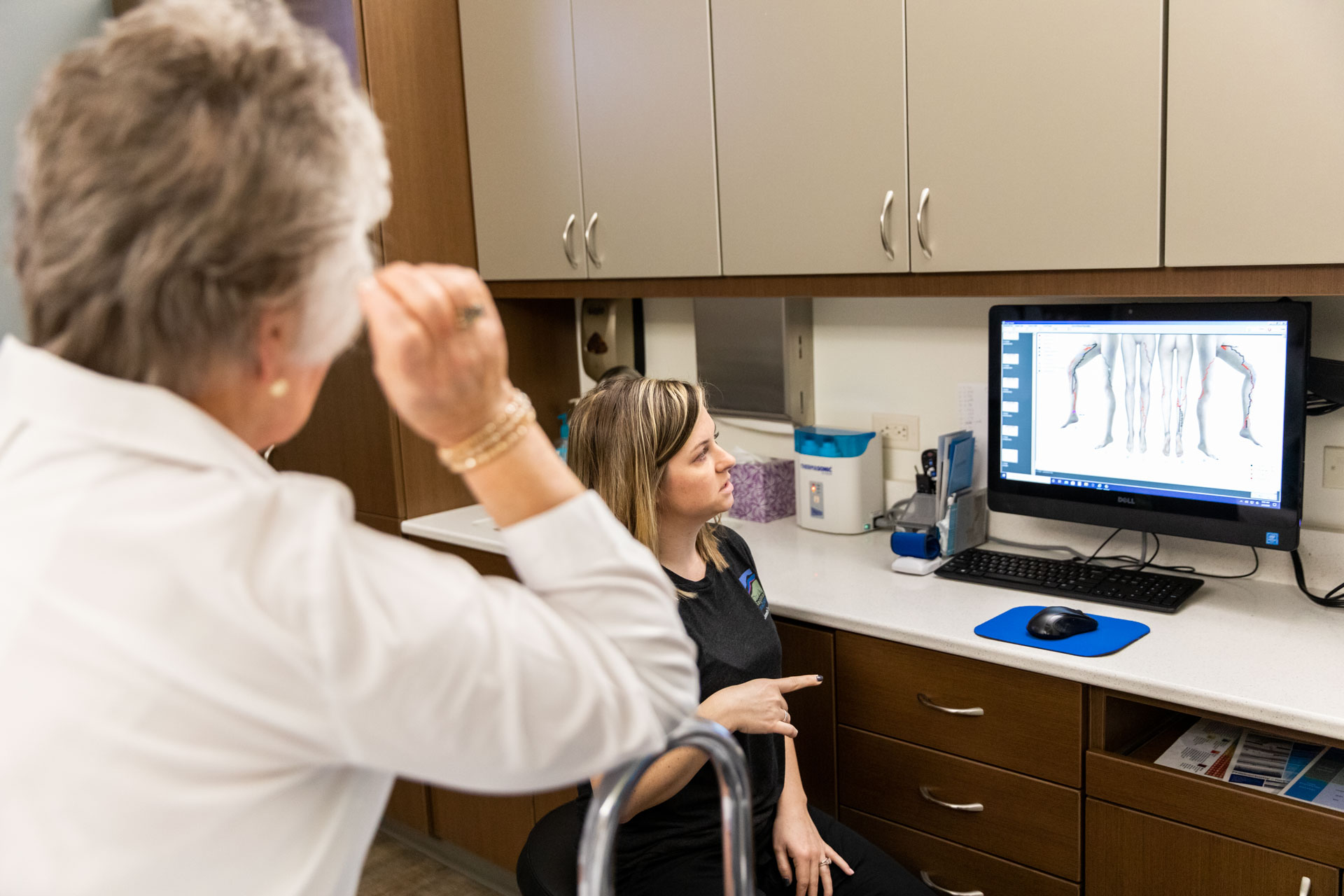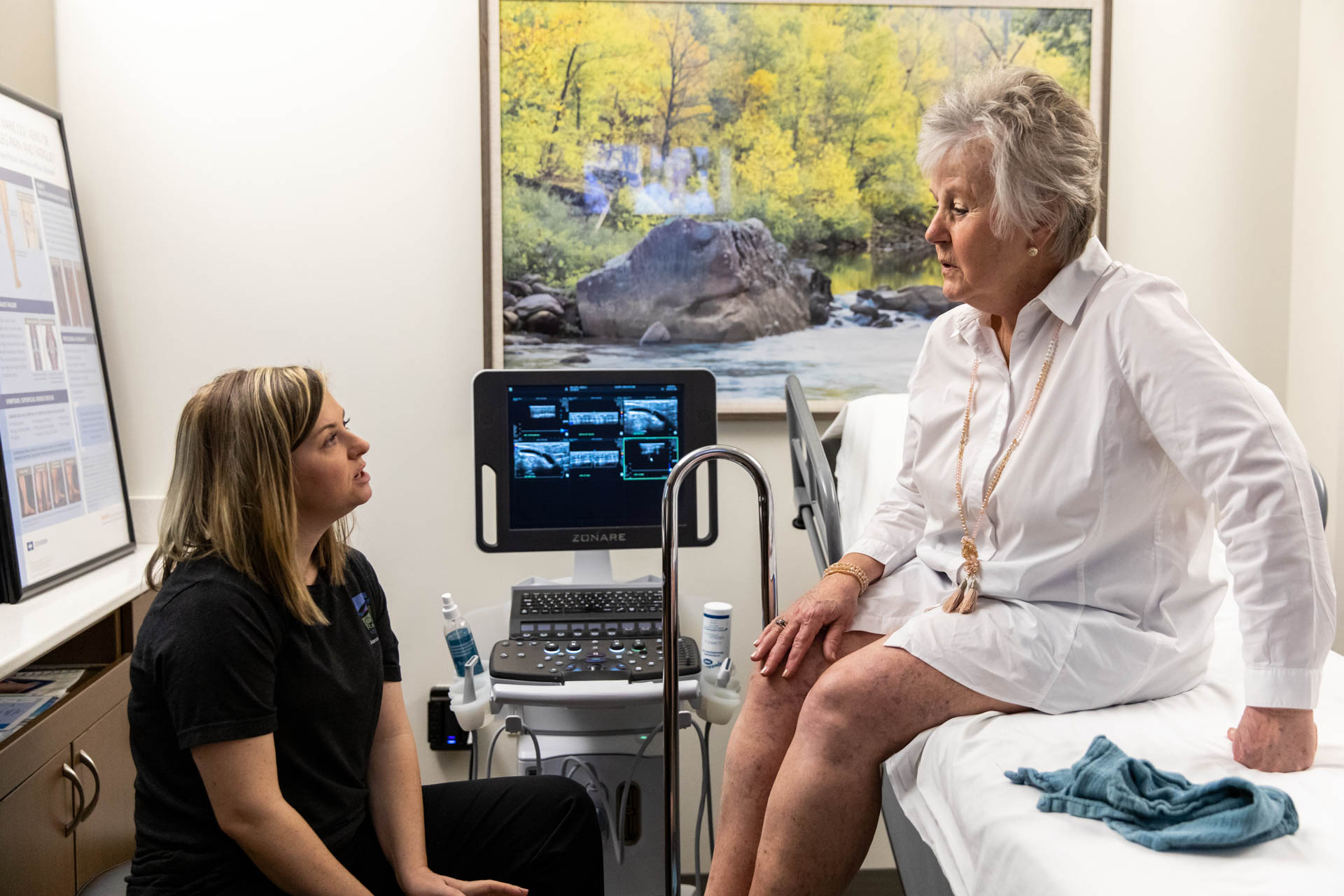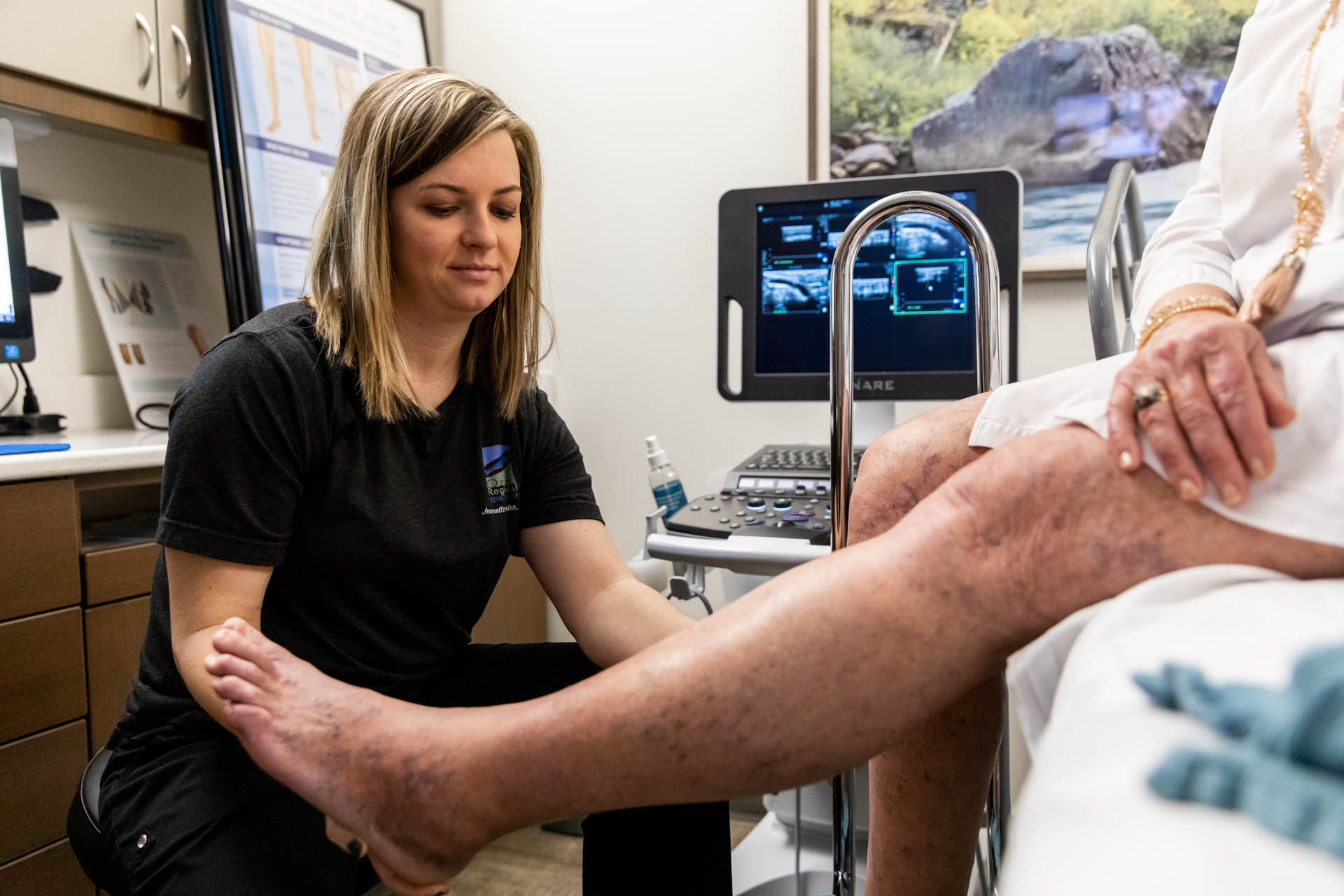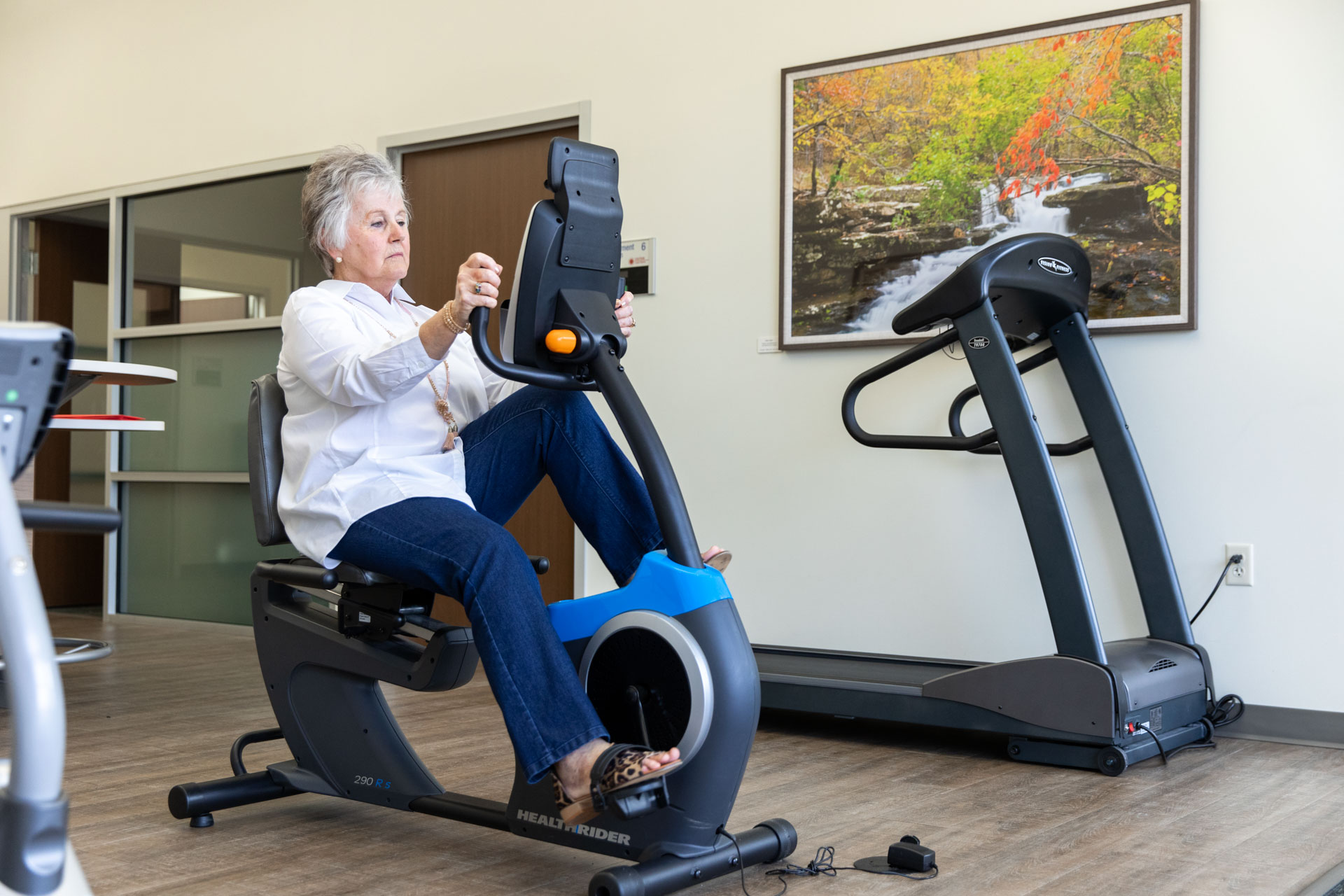One of the most common questions we receive from patients at the Ozark Regional Vein & Artery Center is when they should have come to see one of our vein specialists in Rogers? What is an issue, and what is simply a cosmetic change or a natural sign of aging? These questions can be difficult to answer on your own, but our vein and artery clinic’s 75+ years of combined experience treating veins has made us a go-to resource for vein health and care.
But our patient’s uncertainty makes sense. One of the most unnerving elements of health is not understanding when something is wrong. Signs and symptoms often emerge that we don’t recognize as indicators of a problem until after it’s too late to prevent an issue. This is especially true regarding your vein health, which can take an incredible toll on your physical and mental wellbeing if left unresolved.

So, what does a problem with your veins look like? Answering that is where the vein specialists at the Ozark Regional Vein & Artery Center in Rogers come in! We have plenty of general vein care and vein health tips to keep your veins in excellent condition. Patients from all across Northwestern Arkansas, from Bentonville down to Fayetteville, come to us to receive expert vein treatment and healthcare. We even see patients from across the country who come to the clinic to receive care they can count on.
Here are 6 common signs and symptoms that something is wrong with your veins and that you should reach out to the incredible vein specialists in Rogers here at the Ozark Regional Vein & Artery Center.
1. Night Cramps
One of the first symptoms of venous disease is leg cramping. It’s your veins’ job to transport blood back to your heart once your heart pumps it throughout your body. When your veins start failing in this task, also known as venous insufficiency, it can lead to a variety of symptoms. Leg cramping is one of the first and the most common.
The slowing or stagnant blood flow as a result of venous insufficiency can, at night when you’re laying in bed for an extended period, result in increased discomfort and site-specific pain. The exact reason for this isn’t apparent, but there is a direct correlation between the onset of night-time leg cramps and venous disease.
That said, cramping has numerous causes. Muscle overexertion, dehydration, strain, or holding a position too long–all these causes are just as likely the reason for your leg cramps.
If you’ve been on your feet all day and when you plop down for bed you notice leg pain, it’s not reasonable to immediately assume the presence of venous insufficiency. It’s essential to think critically about your body’s health. So, if you’re noticing that you’re frequently feeling leg cramps at night as you try to go to sleep, no matter what you’ve been doing, that’s something to mention to your healthcare provider or a vein specialist.
For more information, consider using our virtual vein screening tool to take an active role in your vein health!
2. Restless Legs
A frequent by-product of venous insufficiency is restless legs or Restless Leg Syndrome (RLS), often acting as a compounded version of symptomatic leg cramping. Characterized by the uncontrollable urge to shake or move your legs, RLS often manifests most acutely in the evenings and can lead to incredible difficulty falling asleep or staying asleep. RLS sufferers also report feeling tingling, itching, and pins-and-needles sensations in their legs.

Though various issues can cause RLS, not purely problems with your veins, venous insufficiency can lead to restless legs as the faltering blood valves cause blood to pool in the legs and create discomfort.
Just as with leg cramps, it’s important not to overanalyze and start seeing issues where none exist. The occasional urge to bounce or shake your leg to distract yourself or vent extra energy is normal. If the urge is significantly interfering in your life, though, you should consult your healthcare provider.
The Ozark Regional Vein & Artery Center also offers a virtual vein screening tool to schedule a consultation and take charge of your vein health.
3. Painful Varicose Veins
Varicose veins are one of the most common signs of broader venous insufficiency. Blood that’s not being pumped back to the heart begins to pool or reflux in the veins of your legs and ankles, leading to discolored, bulging varicose veins that protrude against the skin.
The CEAP (Classification, Etiology, Anatomy, and Pathophysiology) is an official standard of classification, followed by vein experts across the country, to classify the severity of your vein issues on a scale of 0-6. C0-C1 are cosmetic issues with virtually no meaningful health effects, and stages C2 and higher are more serious health concerns of increasing severity.
Even though the development of varicose veins is stage C2 of the CEAP scale, there is a common misconception that varicose veins are benign and purely a cosmetic concern. While varicose veins are a natural part of growing older and not always an immediate problem, they can cause leg pain and achiness and become an ongoing health issue if left untreated.
Check out other misconceptions about varicose veins→
Though their removal isn’t always necessary, varicose veins may start forming as early as your 20s and indicate other serious issues. Thankfully, though, if you’re dealing with uncomfortable or painful varicose veins, you have a large selection of treatments for varicose veins and venous reflux with the vein specialists in Rogers at the Ozark Regional Vein & Artery Center.
4. Swelling
Swelling in your legs is often a sign that fluid is building up in your leg veins, which due to venous insufficiency, or some other problem, isn’t moving through your veins like normal. Venous swelling, as known as edema, can manifest in varicose veins or as general swelling along the leg, both of which can become incredibly painful and are a sign of prevailing vascular issues.

No matter its source, you should take swelling seriously. On the CEAP classification scale, swelling is stage C3, the final physical stage before the resulting harm is permanent. As a result, you should try to address it as quickly as possible. For example, a common cause of venous edema is blood clotting, which can be life-threatening.
It’s vital to pay attention to notable bodily changes, like swelling, and seek medical attention if unexpected or concerning. If you’re noticing venous edema in your legs, reach out to your healthcare provider as soon as you can.
5. Skin Discoloration & Browning Around the Ankles
A prominent sign of potential vein health issues is browning skin on your lower legs, around your ankles, or on your feet. These are not sunspots; brown spots can form around your ankles resulting from pooling blood in the veins of your lower legs due to weak valves.
These brownish spots are hemosiderin deposits. Hemosiderin is a pigment, often dark brown or muddy in coloration, created by the breakdown of hemoglobin, the iron content of blood, as a result of blood stagnation. As these deposits form in stagnating blood, they can seep out into the skin and stain it the same brown color, an inflammatory process called Stasis Dermatitis.
Stasis Dermatitis is an incredibly problematic condition, C4 on the CEAP scale, and should be treated as quickly as possible to prevent the development of irreparable skin damage or more significant health concerns down the road.
Exercise, using compression socks, and other behavioral changes can lessen the significance of the problem, but it’s essential to have a vein specialist or healthcare provider look at the discoloration spots.
Learn why you should visit a vein center in rogers for leg pain→
If you’re noticing brown spots on your legs near your ankles or your feet, you should consider reaching out to vein specialists to tackle the problem. They may not be purely cosmetic and could require immediate attention to maintain your health.
6. Ulcers
One of the most severe signs of venous insufficiency and general vascular issues, the formation of venous ulcers indicates circulatory failure. By this time, you likely have, or experienced, many of the previous symptoms mentioned earlier.
Most venous ulcers form after a minor injury. With high pressure and insufficient circulation to move stagnant, waste blood from the veins away from the site of the damage, the tissue around the wound dies from lack of nutrients.
This results in a growing, open sore that can permanently damage your veins, even once healed. Many minor nicks and scrapes heal within two weeks, but venous ulcers often take significantly longer, and some may never properly heal.
Thankfully, the vein specialists in Rogers at Ozark Regional Vein & Artery Center can help treat your venous ulcers. As stage C6 on the CEAP scale, though, the damage done by venous ulcers to your body is permanent. Once you reach CEAP stage C6, your vein health will never return to a stage lower than C5, in which case you should consider reaching out to vein specialists for support in continued vascular care and maintenance.
If you notice open sores or wounds on your leg that aren’t healing or are leaking fluids, contact your healthcare provider or a vein specialist near you to begin the road to recovery. Contact us or use our virtual vein screening tool today to set up a consultation.
Improving Your Vein Health
Though some of these symptoms may seem dire, there’s a lot you can do without involving a vein specialist to improve your vein health and prevent the worst of these symptoms. After all, conservative care and vein-health consciousness play a massive part in preventative care for vascular diseases and circulatory weakness. So if you are noticing some of these symptoms, with enough work and the right support systems, you can get better.
So what all is there for you to do?
Our advice isn’t fun, and it’s certainly not glamorous, but it is simple: take care of your body.

Make sure not to smoke, consume less salt, watch your blood pressure and cholesterol levels, and lose weight if necessary. Much of the stress we place upon our circulatory system is, with attention, easily fixed. Though some patients don’t have a say in the matter due to underlying issues, for most people your vein care is up to you.
Making health-conscious choices can be the difference between a robust, healthy circulatory system and unwanted pain and achiness managed through repeated vein treatments.
Activities To Improve Vein Health
If you’re looking for more specific steps you can take to improve your vein health, here are a few activities you can do to improve venous insufficiency and overall circulation:
- Exercise. Exercising is a great way to improve venous insufficiency, as it gets blood flowing which can mitigate blood pooling in your veins. Walking and cardiovascular exercise are especially beneficial.
- Wear compression stockings. Compression socks or stockings apply constant light pressure to your legs, gently forcing blood up the veins in your legs through the applied pressure. Compression stockings may help alleviate the blood reflux that leads to discomfort.
- Elevate your legs. Elevating your legs while sitting down can naturally help the blood flow toward the heart, as your veins won’t have to work against gravity. This can improve circulation and lessen blood reflux in your legs.
Note: It’s important to remember that none of these behaviors should replace consulting a healthcare provider or vein specialist if you are worried about your vascular health.
Learn more about conservative management for leg veins →
If You Need Support, See the Vein Specialists In Rogers
If you’ve been dealing with vascular issues for any period of time, and your care has fallen through the cracks, come to the Ozark Regional Vein & Artery Center in Rogers. Whatever your vein issue, we will guide you toward lasting wellness solutions that will leave you happier and healthier.
The Ozark Regional Vein & Artery Center is the premier practice in Northwest Arkansas for all the highest-quality vein treatments available. Dr. Haney and the expert staff at the Ozark Regional Vein & Artery Center in Rogers have over 75 years of combined experience in the industry. Patients come to Dr. Haney from all over Northernwestern Arkansas, from Fayetteville to Bentonville, to ensure they receive the best concierge-level care and leg vein procedures available.
After all, helping people is what we do, and it is our mission to provide the people of Northwestern Arkansas and beyond with the absolute best care possible. Our expertise and focus on patient education help us to achieve tangible results every time.
Take the first step on the road to recovery with our Instant Vein & Artery Screening Quiz or by scheduling a consultation. We also hold regular free screening events. Sign up for our newsletter to be notified of our free public events and other practice specials!

